The best times to add compost to a vegetables garden are at the start of the growing season, when preparing a new garden bed in the ground soil, when preparing a no-dig garden or to protect vegetables over a cold winter or hot summer.
Add compost to a vegetable garden before planting new season crops in spring and fall. This will replace nutrients used up by the previous crop and help to aerate the soil. Compost helps to hold moisture in the soil for longer which is great for summer vegetables and also helps with drainage to prevent root rot over winter.
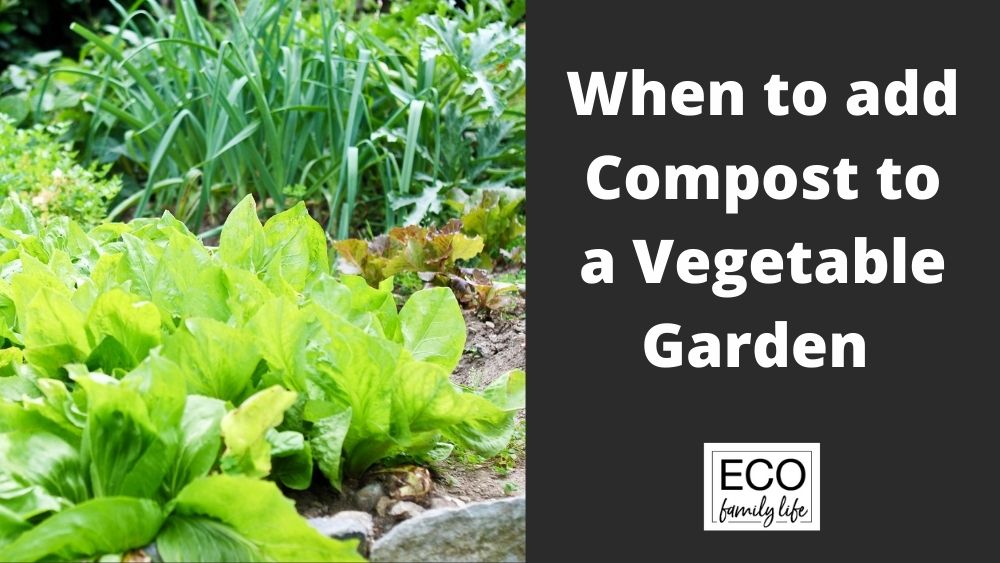
This article will explore the best times to add compost to your vegetable garden and how to do this without harming your plants or soil.
5 Times to add compost to a vegetable garden
Here are the 5 times you can add compost to a vegetable garden. This will help to boost soil, feed soil bacteria and worms and replace lost nutrients from the last growing season.
1. At the start of the growing season
The best time to add compost to your vegetable garden is at the start of the growing season. There are 2 main growing seasons for vegetables. Winter vegetables will be planted in fall, these include brassicas such as broccoli, cauliflower and kale. Summer vegetables are planted in spring including peppers, tomatoes and basil.

Before you plant your new season crop adding compost is a great idea. The previous crop will have used up a range of nutrients as they grow. Compost is a great way to gently replace the nutrients and add more organic matter to the soil. This will help to hold water for your new plants and improve soil structure.
How to add compost to prepare vegetable garden beds
At the start of the growing season pull out and remove any old plants from the previous season. Put them in your compost bin and check out the mulch. If the mulch has broken down and is starting to look brown then you can dig this into the soil. It will continue to break down with the new compost.
Add around a wheelbarrow full of compost for every 4×4 foot garden space. Dig it into the soil gently with a garden fork to mix it through. You can also add some aged manure, cow manure is my favorite because it is a mild fertilizer with small amounts of nitrogen.
2. Prepare a new vegetable garden bed

If you are preparing a new garden bed for vegetables it is important to add compost. Most ground soils will need improving before planting vegetables and compost is the best way to do this. If you are preparing a raised garden bed, fill the base with coarse sand, add raised garden bed mix and mix through compost.
For new garden beds in the ground, mix compost through the soil after removing weeds. This will improve drainage, add extra organic matter to feed the soil bacteria, worms and plants. Cover the soil with 3 inches of mulch until you are ready to plant. Straw mulch works best because it breaks down over a season and can be dug through at the end.
3. To prepare a no-dig vegetable garden

Use compost to prepare a new no-dig vegetable garden. This is the easiest way to make a new garden bed for vegetables without the need to disturb your existing soil.
To do this layer cardboard on the ground soil covering the whole area of your new garden bed. Layer a compost and aged manure mix on top of the cardboard to give the plants something to grow in. Over time the cardboard will break down allowing the plant roots to reach into the deeper soil.
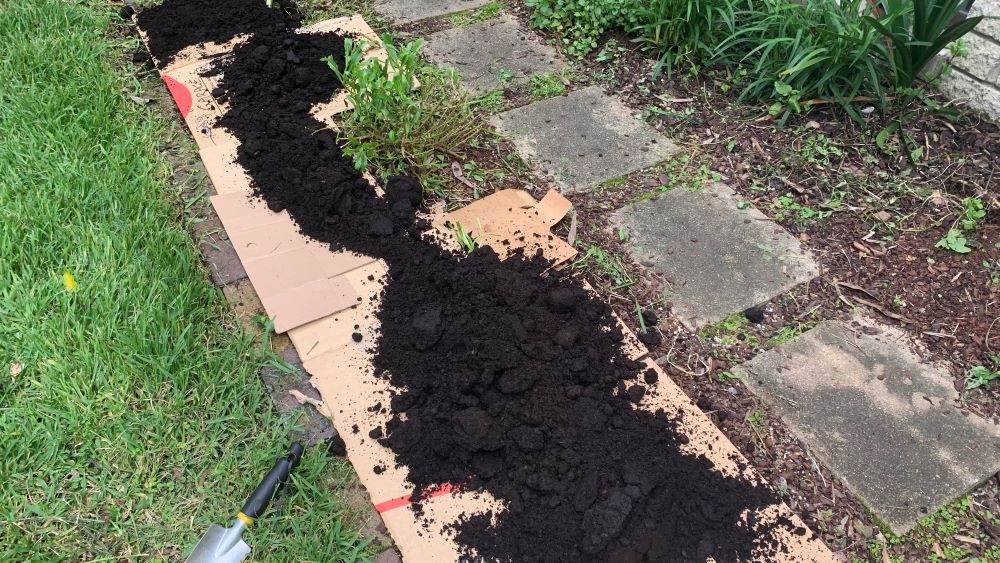
The cardboard will stop weeds growing and smother any weed seeds so they don’t compete with your vegetables.
This year I have started a new no-dig garden bed with a mix of flowers and vegetables. I like to interplant broccolini and flowers because they look great together and it gives me more room to grow vegetables in my small garden.
5. Surround existing annual vegetables with compost
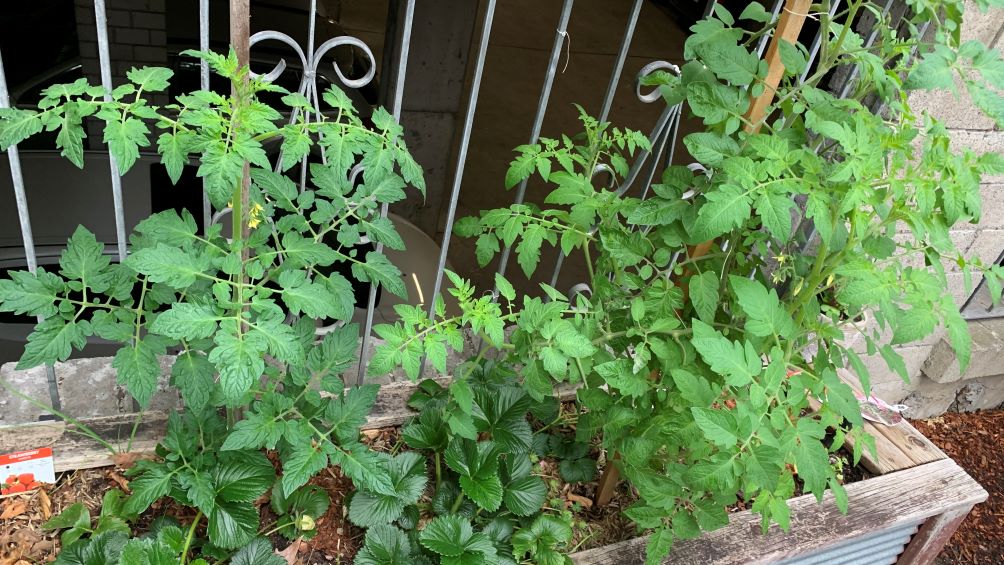
Surround your existing annual vegetables plants with compost as a top dressing half way through the growing season. Rake back the mulch from the surface of the soil gently. Layer 2-3 inches of compost on top of the soil around the root zone of plants. The root zone is the area directly under the leaf area.
You can spread the compost out further than this to improve the surrounding ground soil and encourage a wide spreading, healthy root system for your vegetables. Avoid digging the compost in as this could disturb the plant roots.
Top-dressing tomatoes with compost
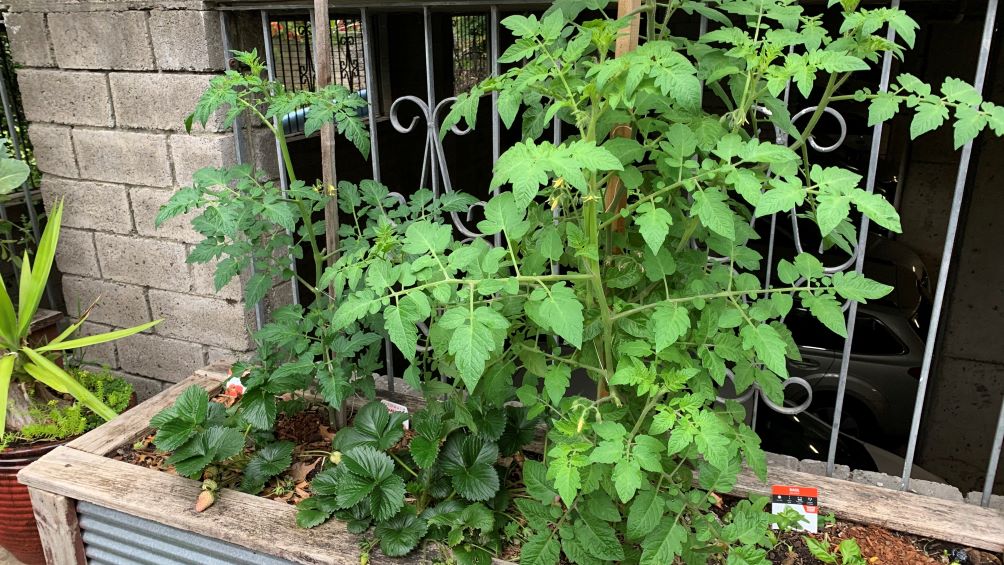
For established tomato plants I like to add a top dressing of compost half way through the season. This is right in the middle of summer when the weather is at its hottest. It helps to hold water in the soil for longer, keeping the soil moist and stops the tomatoes splitting when the rain arrives.
Top-dressing perennial vegetables with compost
Surround perennial vegetables like rhubarb crowns with compost in the fall. This will help to feed the plant and protect the soil over winter.
Top-dressing strawberries with compost
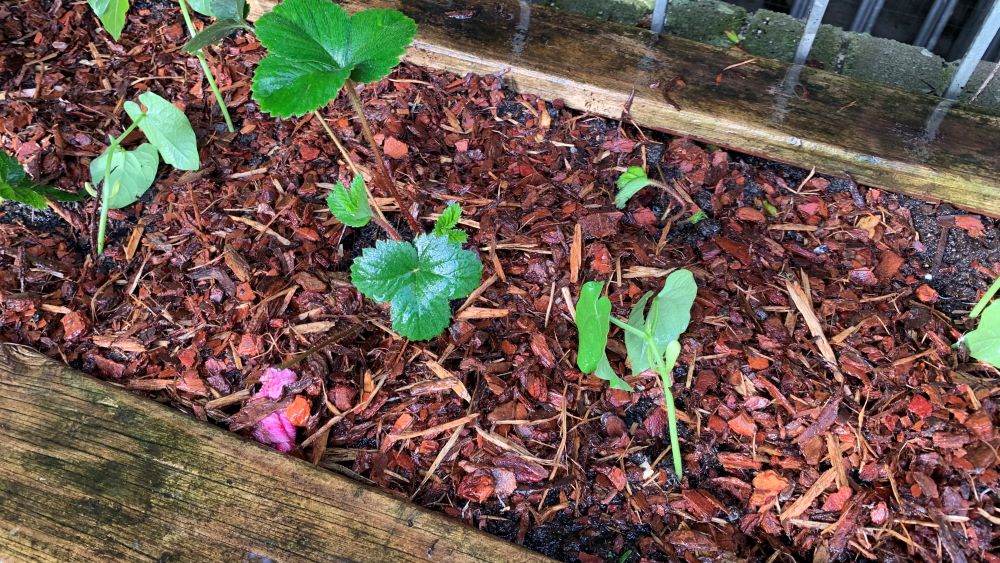
Strawberries will benefit from added compost in fall and spring. When I clean up my strawberry bed I will remove old leaves, stems and runners. Surround the strawberry plants with aged compost and then cover the whole lot with mulch. Straw mulch works best but use whatever you have on hand. This year I had some extra bark mulch to surround my strawberry plants for the winter.
For more on how to clean up strawberry plants for winter, check out my previous article here: Should I Cut Leaves off Strawberry Plants? | How to Clean Up Beds in Fall
Compost will benefit soil over time and the more consistently you add it to the soil, the better it will become.
When to Add Compost to a Vegetable Garden | Summary
Add compost to your vegetable garden whenever the soil is bare are needs improving. Add compost twice per year at the start of each growing season in spring and fall. Top dress vegetables with compost in summer to help to keep the moisture in the soil for longer.
Well-aged, homemade compost is the best ingredient to prepare new garden beds or a no-dig garden. Vegetables can be planted straight into the compost and will grow down into the soil over time.
Happy growing.
I am an accredited practicing dietitian, experienced gardener and a dedicated cook. I love writing and sharing my experience so you can learn from my successes and mistakes.
